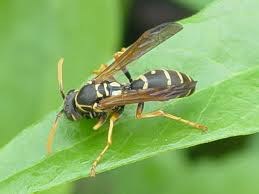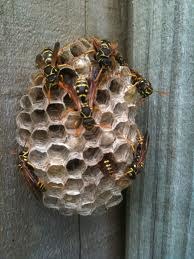 Asian paper waspNew Zealand has several species of native wasp which have never become a nuisance. But what you’re most likely to see around suburban Auckland are invasive species which have been accidentally introduced since the 1940s – German wasps, common wasps and three species of paper wasp.
Asian paper waspNew Zealand has several species of native wasp which have never become a nuisance. But what you’re most likely to see around suburban Auckland are invasive species which have been accidentally introduced since the 1940s – German wasps, common wasps and three species of paper wasp.
As well as being a risk to human health, all are seriously detrimental to our native wildlife. They attack insects and newly-hatched birds, devastate our native butterflies (by devouring their eggs and caterpillars) and eat honeydew which would normally feed our honeyeater birds. They have no natural predators.
Remember, common and German wasps nest in the ground and the walls of houses; paper wasps are found on small nests they build under eaves and within trees and shrubs. There’s lots of great information on DOC’s Wasps webpage.
 Asian paper wasp nestTreating nests
Asian paper wasp nestTreating nests
Wasps are easily provoked and their sting can cause severe allergic reactions: if you’re doing wasp control, do it quickly, covered up fully along with a beekeepers veil if you have one.
If you see a wasp nest in a reserve, immediately contact the Auckland Council Contact Centre on (09) 301 0101. The council won’t remove nests on private property, so if you want to control them at your place, consider calling a specialist. If you wish to control them yourself, use fly spray in the evening to kill paper wasps, because that’s when they’re all “at home”. Wasp poison powder such as Dust2Dust can be puffed into ground nests late in the evening when wasps are less active. The nest then needs to be crushed, otherwise the pupae – which are protected from the spray – will emerge and restore the colony.
Baiting
If you are particularly concerned that the wasp populations are very high, talk to Urban Ark – Manawa Taiao about testing for treating the wider area with Vespex, a bait station based control. Email [Enable JavaScript to view protected content]
Pest Free Kaipātiki have lots more useful information here.
